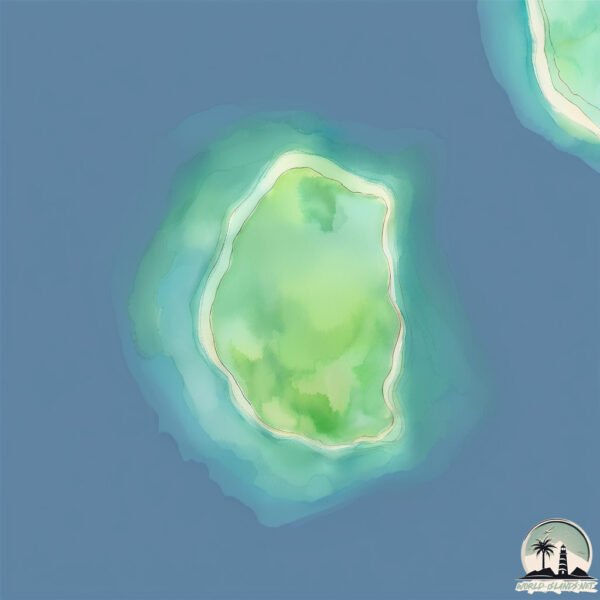Pulau Muko

Welcome to Pulau Muko, a Tropical island in the Indian Ocean, part of the majestic Indian Ocean. This guide offers a comprehensive overview of what makes Pulau Muko unique – from its geography and climate to its population, infrastructure, and beyond. Dive into the details:
- Geography and Size: Explore the island’s size and location.
- Climate and Weather: Weather patterns and temperature.
- Topography and Nature: Uncover the natural wonders of the island.
- Infrastructure and Travelling: Insights on reaching, staying, and making the most of your visit.
- News and Headlines: Latest News.
Geography and size of Pulau Muko
Size: 0.98 km²
Coastline: 3.9 km
Ocean: Indian Ocean
Sea: Indian Ocean
Continent: Asia
Pulau Muko is a Tiny Island spanning 0.98 km² with a coastline of 3.9 km.
Archipel: Malay Archipelago – The world’s largest archipelago, located between mainland Southeast Asia and Australia, known for its immense biodiversity and cultural diversity.
Tectonic Plate: Sunda – Extends across Southeast Asia, encompassing parts of the Sunda Shelf, known for its interaction with the Australian Plate, contributing to volcanic activity in Indonesia.
The geographic heart of the island is pinpointed at these coordinates:
Latitude: -2.21699171 / Longitude: 99.54073913
Climate and weather of Pulau Muko
Climate Zone: Tropical
Climate Details: Tropical Rainforest Climate
Temperature: Hot
Climate Characteristics: This climate is typified by heavy rainfall throughout the year, high humidity, and consistently high temperatures, leading to lush rainforests and rich biodiversity. Seasonal temperature variations are minimal.
Topography and nature of Pulau Muko
Timezone: UTC+07:00
Timezone places: Asia/Jakarta
Max. Elevation: -10 m
Mean Elevation: -14 m
Vegetation: Deciduous Needleleaf Forest
Tree Coverage: 95%
The mean elevation is -14 m. Remarkably, this unique island barely emerges above the sea level, showcasing nature’s fascinating interplay with the ocean. The island is characterized by Plains: Flat, low-lying lands characterized by a maximum elevation of up to 200 meters. On islands, plains are typically coastal lowlands or central flat areas.
Dominating Vegetation: Deciduous Needleleaf Forest
Consists of needleleaf trees that shed their needles annually. This type of forest is less common and can be found in certain cold, northern regions. Pulau Muko has a tree cover of 95 %.
Vegetation: 3 vegetation zones – Moderately Diverse Island
These islands start to show a broader range of ecological niches. With three vegetation zones, they may offer a mix of ecosystems like coastal areas, inland woods, and perhaps a distinct wetland or dry area. This diversity supports a wider range of flora and fauna, making these islands more ecologically complex than those with minimal diversity.
Infrastructure and Travelling to Pulau Muko
Does the island have a public airport? no.
There is no public and scheduled airport on Pulau Muko. The nearest airport is Tabing Airport, located 174 km away.
Does the island have a major port? no.
There are no major ports on Pulau Muko. The closest major port is TELUK BAYUR, approximately 163 km away.
The mean population of Pulau Muko is 14 per km². Pulau Muko is Gently Populated. The island belongs to Indonesia.
Continuing your journey, Sipura is the next notable island, situated merely km away.
聟島列島2014(Mukojima Islands)


![[記録]2003年小笠原諸島 聟島列島 針之岩 Movie ogasawara -Mukoshima Islands 6](https://i.ytimg.com/vi/Er3wC_gKCGs/mqdefault.jpg)
Indonesia is classified as Emerging region: MIKT: Mexico, Indonesia, South Korea, and Turkey – Economies recognized for their development potential and emerging market status. The level of income is Lower middle income.
News – Latest Updates and Headlines from Pulau Muko
Stay informed with the most recent news and important headlines from Pulau Muko. Here’s a roundup of the latest developments.
Please note: The data used here has been primarily extracted from satellite readings. Deviations from exact values may occur, particularly regarding the height of elevations and population density. Land area and coastline measurements refer to average values at mean high tide.
